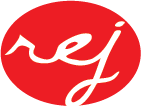Technical Details
All digital assets, with the exception of moving images (details below), were created in the University of Rochester Libraries' Digitization Lab, Digital Scholarship, using either professional photographic flatbed scanners or a DT RCam reprographic camera. Digital photographs were captured in camera RAW format and then converted to 150 dpi JPEG files for online presentation. Scanned assets were captured as 600 ppi TIFFs and also converted to 150 dpi JPEG files for website display. Unless otherwise noted, moving images were scanned at 1920x1080 un-compressed with a pillar box to maintain the correct aspect ratio, using the da Vinci color corrector to recover the color of faded prints. Scans were made at 24fps, with some dust busting to clean each film of artifacts. An Apple pro res 4:2:2 HQ 1920x1080 file was made for each film. The moving images were then transcoded with additional color correction using the H264 codec, using the open source software ffmpeg.
Preservation, Storage, and Disaster Recovery
The digital assets are currently stored on 2 terabytes of storage disks in a regular file structure. The University's Data Center is located in a climate-controlled, secure state-of-the-art facility that uses a combination of tape backups and redundancy to ensure data integrity. The project's long-term preservation plan includes migrating still and moving image files and Metadata Object Description Schema (MODS) to the library's Digital Asset Management System (DAM). The project’s website is hosted in the RCL’s virtual server environment, which is backed up by a dedicated VEEAM server capable of restoring the full website in less than one hour to full functionality in the case of server failure with no loss of data.
Dissemination and Access
The University of Rochester will continue to provide public access to the Re-Envisioning Japan online project for as long as the website architecture is viable and can be supported; the RCL will steward the online interfaces and digital assets in a manner consistent with library-owned assets.
